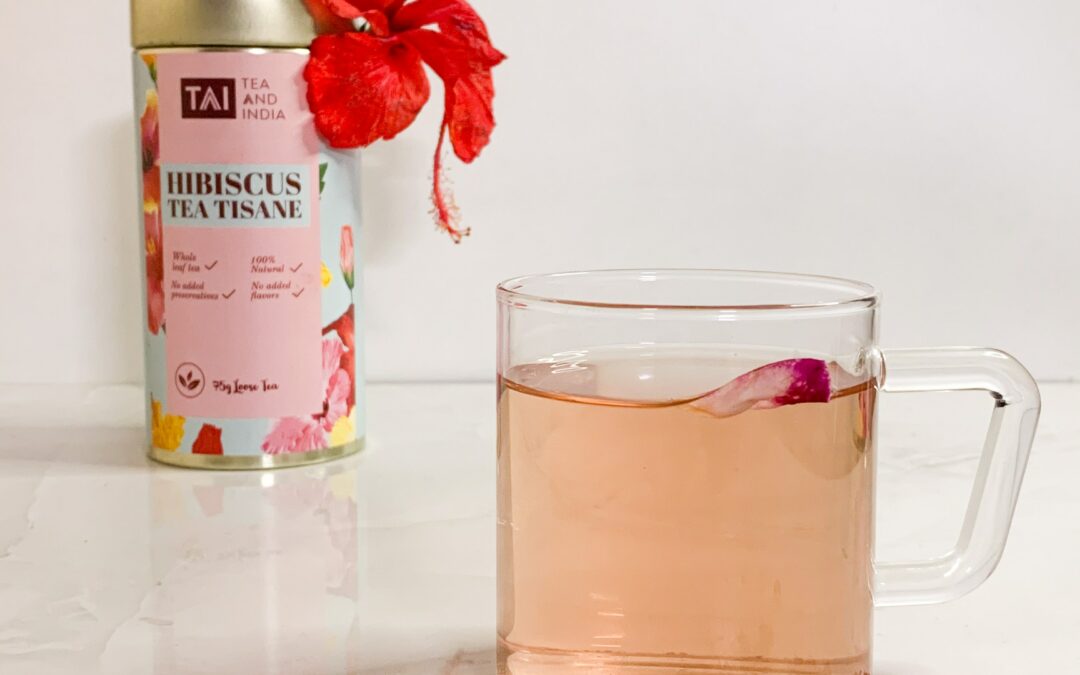It started innocuously enough. “What a great flower year it’s been!” We were at a wedding reception, and a beautiful bouquet was in front of us. Collegially, we tried to identify the milieu. I blurted out “I think that’s a hydrangea,” though it might not have been given the odd flowering bursts from a base that wasn’t at all globelike like I had seen before. However, a friend agreed, and then commented on how it was a good year for hydrangeas, well, all flowers.
“Yes! And the size of the hibiscus I’ve seen have been staggering!” Mumblings approved, comparing notes about prize-winning flowers in the area. Someone then added that you can eat hibiscus and other flowers. I guess we were hungry and probably needed another pass at the buffet line before the flower display succumbed to our urges. We were spinning off into other botanical topics in a wonderful, stream-of-conscious way. In this moment I heard about hibiscus tea. “That’s jamaica in Spanish.”
Ahhhhhh. The light bulb came on. I had had jamaica tea in various countries, and a friend from The Gambia made his version of it, called wonjo. And then there’s the island named Jamaica, on my list as much for the respite from our northern winters as for the music, culture, cuisine, and generally welcoming demeanor of Jamaicans I have had the honor of meeting around the world. Is the island named because of the flower? Are all hibiscus flowers edible? Should my hibiscus-growing neighbors beware, and then suspicious if I walk by with a red-colored beverage?
It was clearly time to don my botanical sleuth hat and answer those questions and others. I delved into some websites that are old standards for plant sleuthery (I’ve never written that word before). For example, I find it illuminating to explore tropicos.org, see what the Kew Gardens (kew.org) has to say, and fill in the gaps with other internet top hits, in this case, from the University of the District of Columbia (http://docs.udc.edu/causes/Fact_Sheet%20-%20Growing_Roselle.pdf) and Purdue University (https://www.hort.purdue.edu/newcrop/duke_energy/Hibiscus_sabdariffa.html). Am I the only one that relies on the top hits from an internet search, calling it “good” when I arrive at “satisfying” answers to my queries? Well, the information below is a direct result of that efficient (lazy?) search technique.
I feel like I should have known about this topic already. The incredibly red beverage, hibiscus tea, known in Spanish as flor de Jamaica, is so named because the plant arrived in Latin America from the island of Jamaica. But hibiscus in Jamaica also had its own arrival story; it seems as if the particular hibiscus species used in tea (see below) originated in Africa, more specifically in the west tropics to the Sudan (see above for references), and then eventually was cultivated all over the world, Jamaica (Caribbean) included. I pondered this plant following people, traveling with people, and what effort that must have taken. Who did the transporting? And why?
To answer the why question, I had to first know what we were talking about. There are many species of hibiscus, a type of plant in the malva, or Malvaceae, family. The species used for tea is referred to as roselle or red sorrel, or Hibiscus sabdariffa for you botanical types. It’s a perennial bush, and the wrapping around the flowers, called the calyx, is picked, dried, and sold (or used) to make an infusion for consumption. The Cliff Notes for Botanical Preparation: add some of dried hibiscus calices to a drinking vessel, add hot water, and wait briefly for the medicinal properties, and red color, to enter into the water.
What are those medicinal properties? The history of medicinal use, and current lingering use, is extensive. The red color in the water seen after steeping represents a mixture of plant chemicals that are anti-oxidant and anti-inflammatory. The more I read about hibiscus, the more the question came up, what does hibiscus NOT have? If I were to list plant chemicals I would want in a medicinal brew that have anti-inflammatory, anti-cancer, anti-oxidant, and otherwise generally healthy effects, I would put hibiscus on speed dial and get in touch, immediately. Here’s what we’re talking about: hibiscus has anthocyanidins (think, that amazing red color). And, hibiscus has polyphenols, including flavonoids. You want flavonoids, of many types and colors, to keep your physiology whizzing along in good balance of oxidation (from all of the oxygen we breathe and use) and anti-oxidation. Who do you call? Flavonoids! One of these to know is quercetin, found in most, if not all, plants to a varying degree, and one that is regularly prescribed to help with allergies or some urinary problems or both. And, one of my favorites, beta-sitosterol, mostly because it’s so fun to pronounce (pronounce away; I’ve heard alternate pronunciations, neither of which I can say is perfectly correct, so you can’t go wrong), and because it’s a heavy-hitter (baseball analogy) of the anti-inflammatory category of plant chemicals. These anthocyanidins and polyphenols lead to many physiological changes in the body, both right away and with regular ingestion. For example, you can count on hibiscus tea to lower your blood pressure a few points, perhaps even help with elevated cholesterol levels. Hibiscus is also a sedative and calming agent (maybe indirectly why blood pressure decreases slightly), so helps people with sleep and anxiety. Many other uses show up in cultures throughout the world; as per the reference below “diuretic, cholerectic, febrifugal and hypotensive effects, decreasing the viscosity of the blood and stimulating intestinal peristalsis.” It really makes sense that hibiscus made the “spread everywhere” list; it’s tea is easy to make, it has wide ranging physiologic effects, it looks beautiful, and grows easily. What’s not to like?
Reference:
Da-Costa-Rocha I, Bonnlaender B, Sievers H, Pischel I, Heinrich M. Hibiscus sabdariffa L. – a phytochemical and pharmacological review. Food Chem. 2014 Dec 15;165:424-43. doi: 10.1016/j.foodchem.2014.05.002
Photo credit: Photo by mansi Chaudhary on Unsplash


